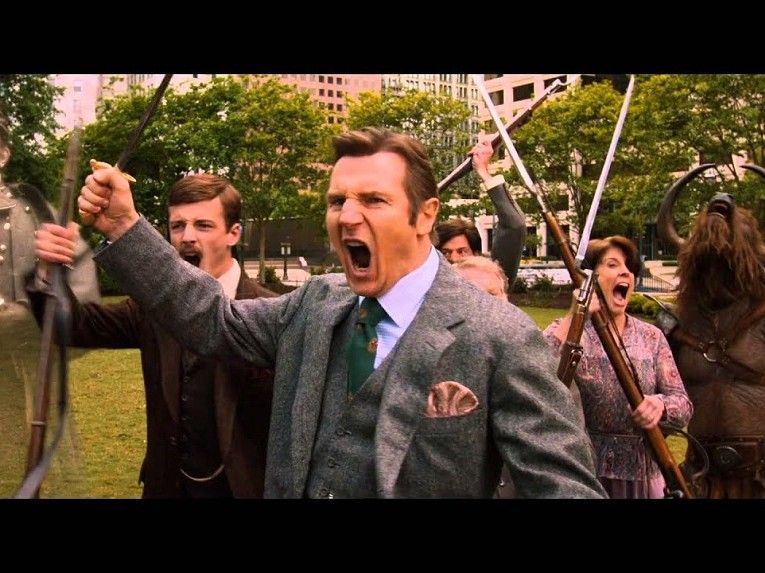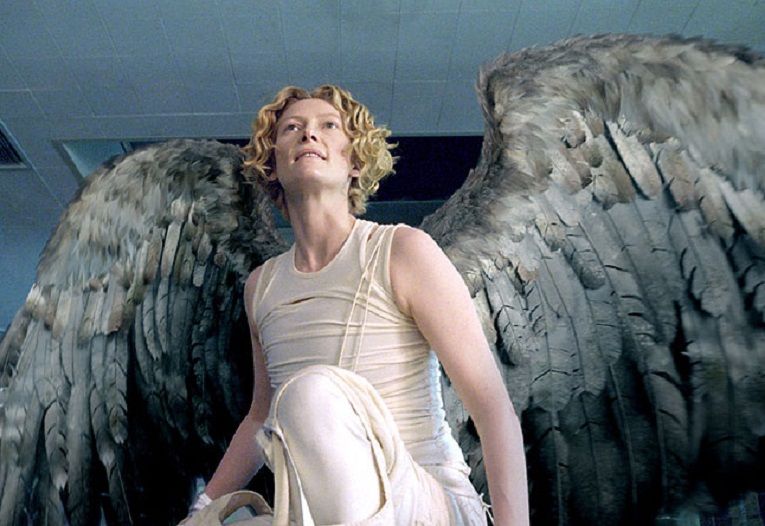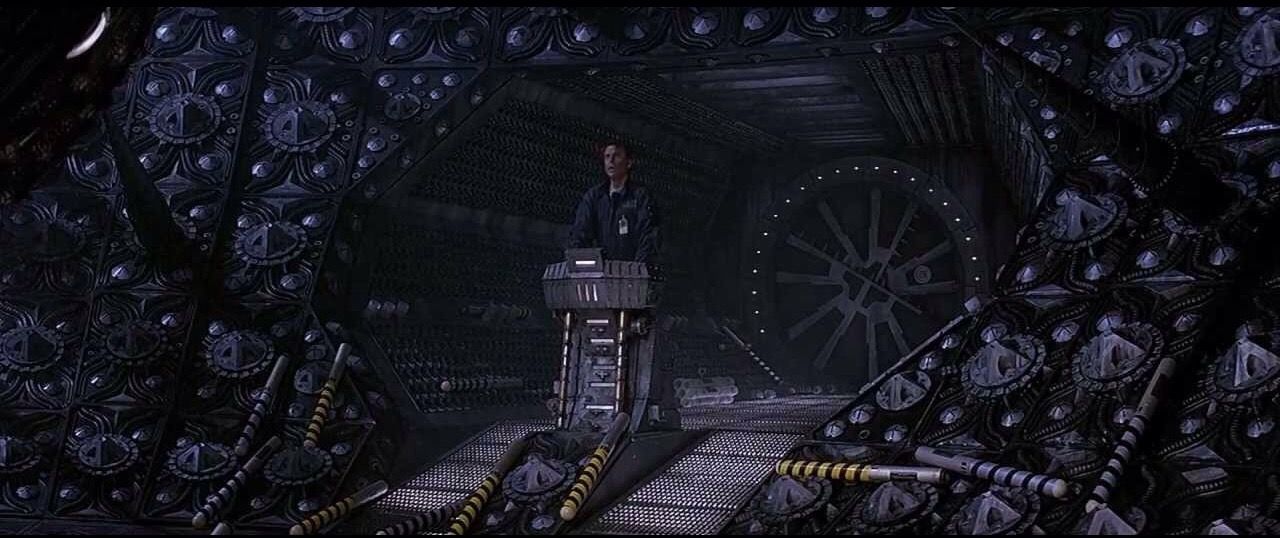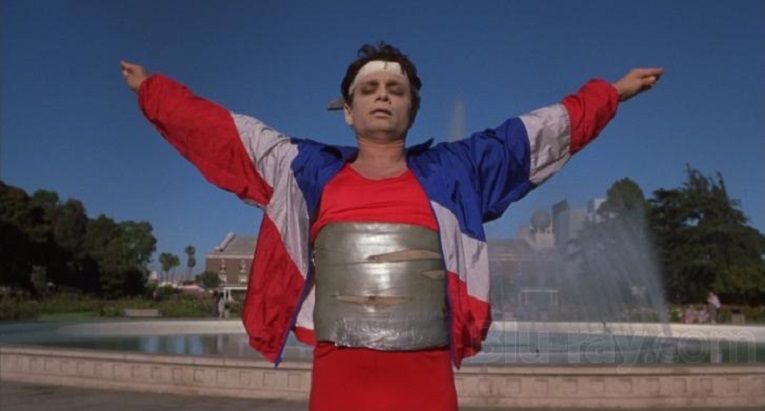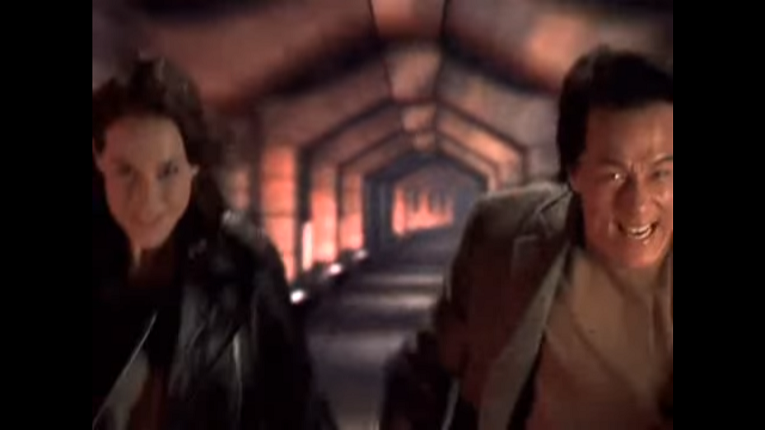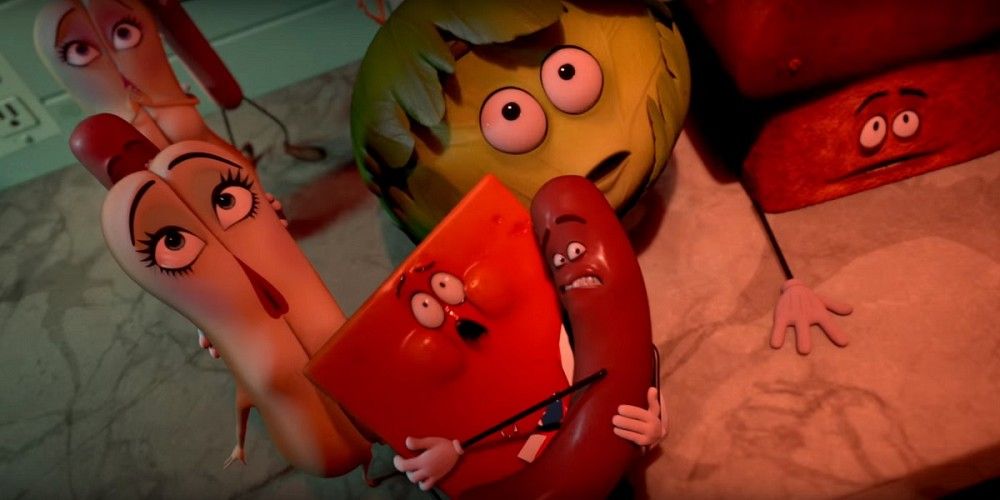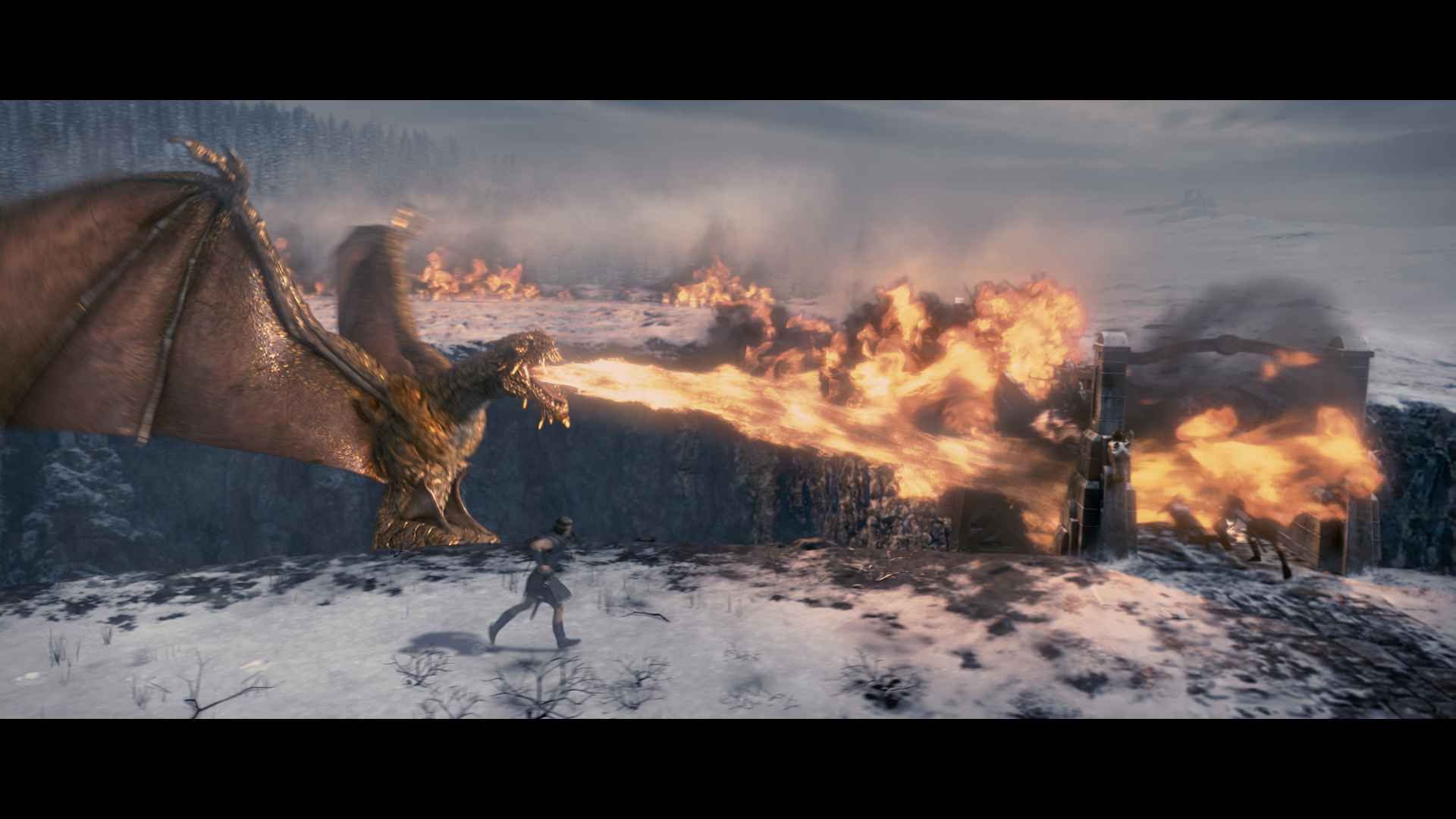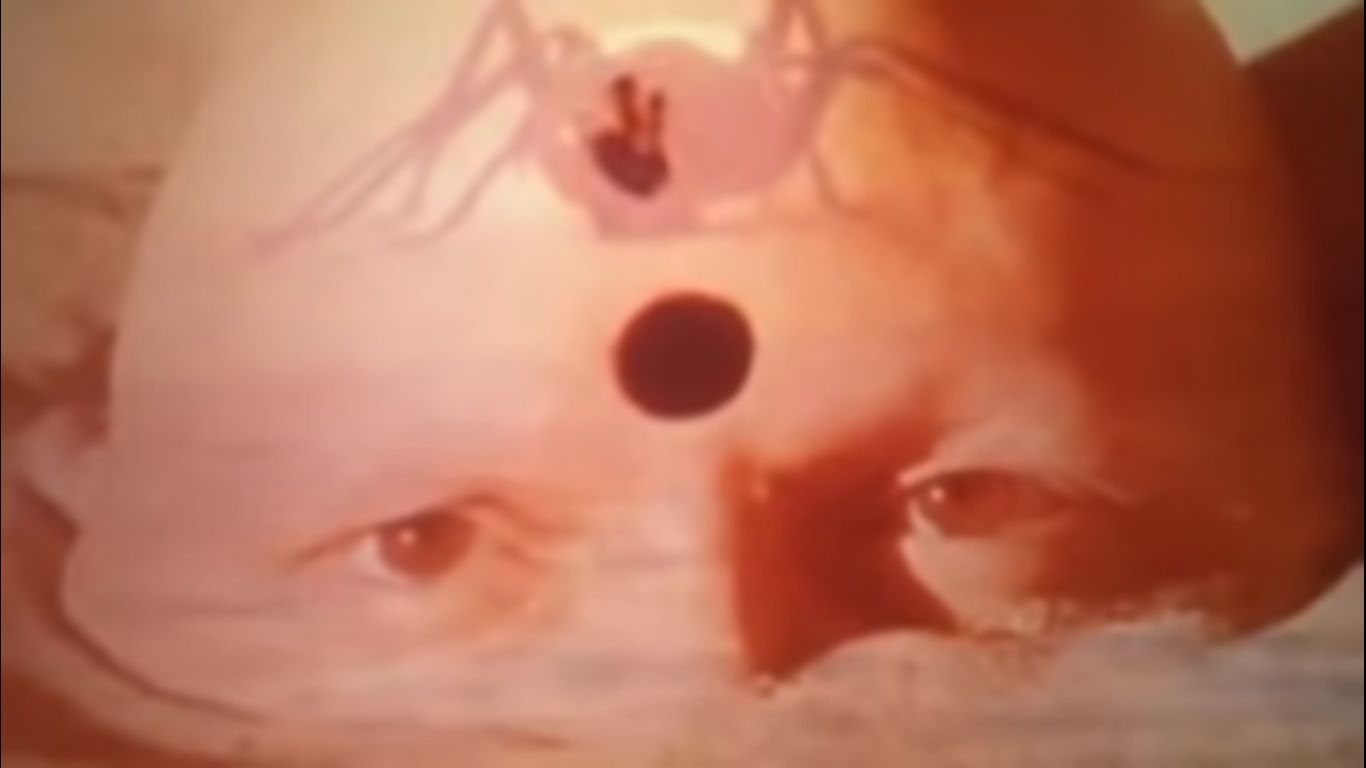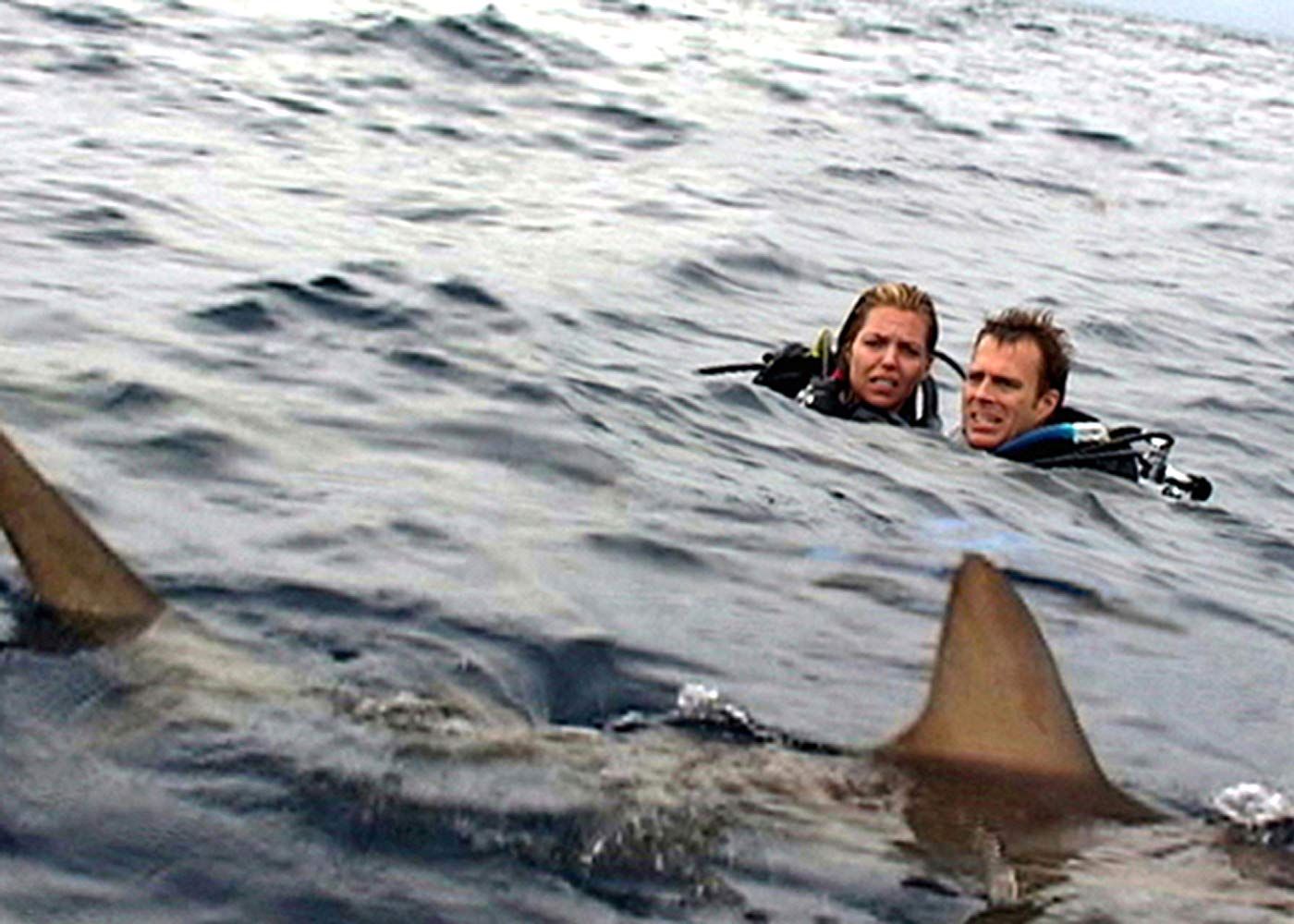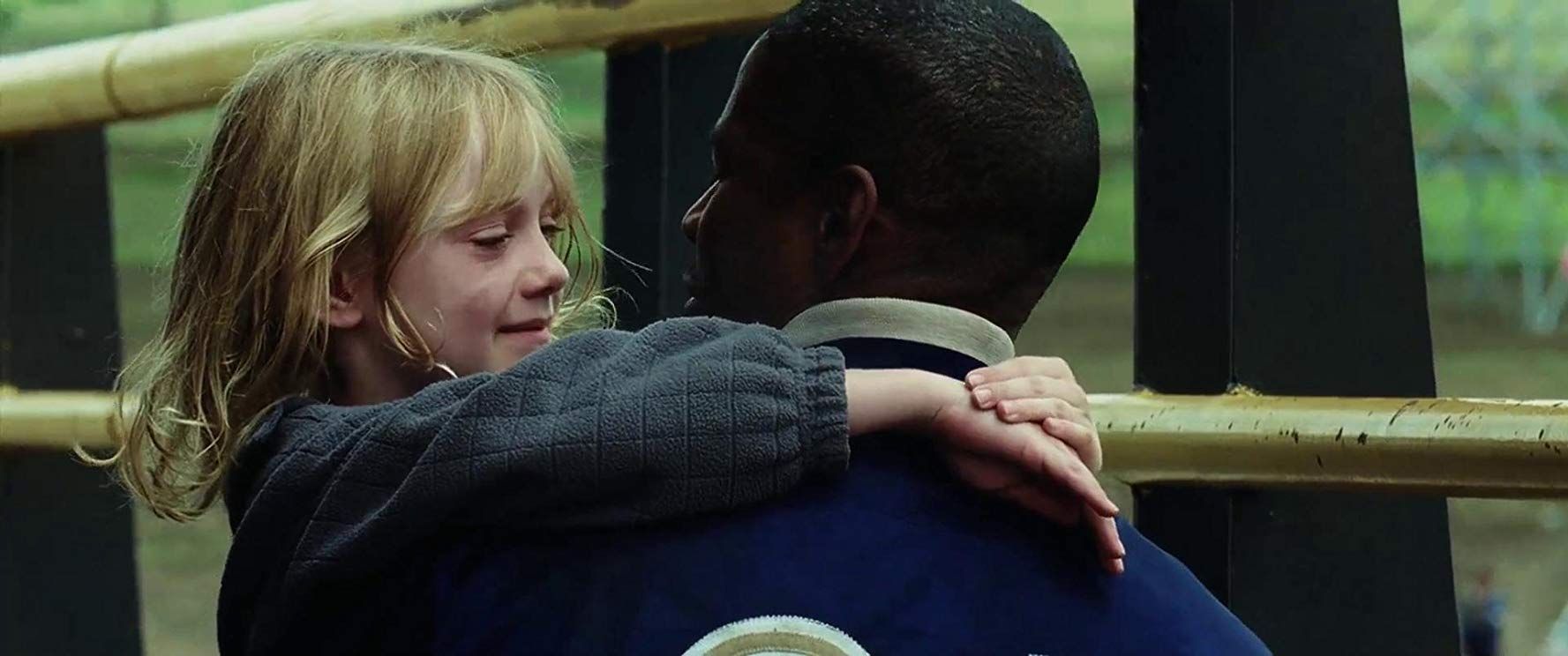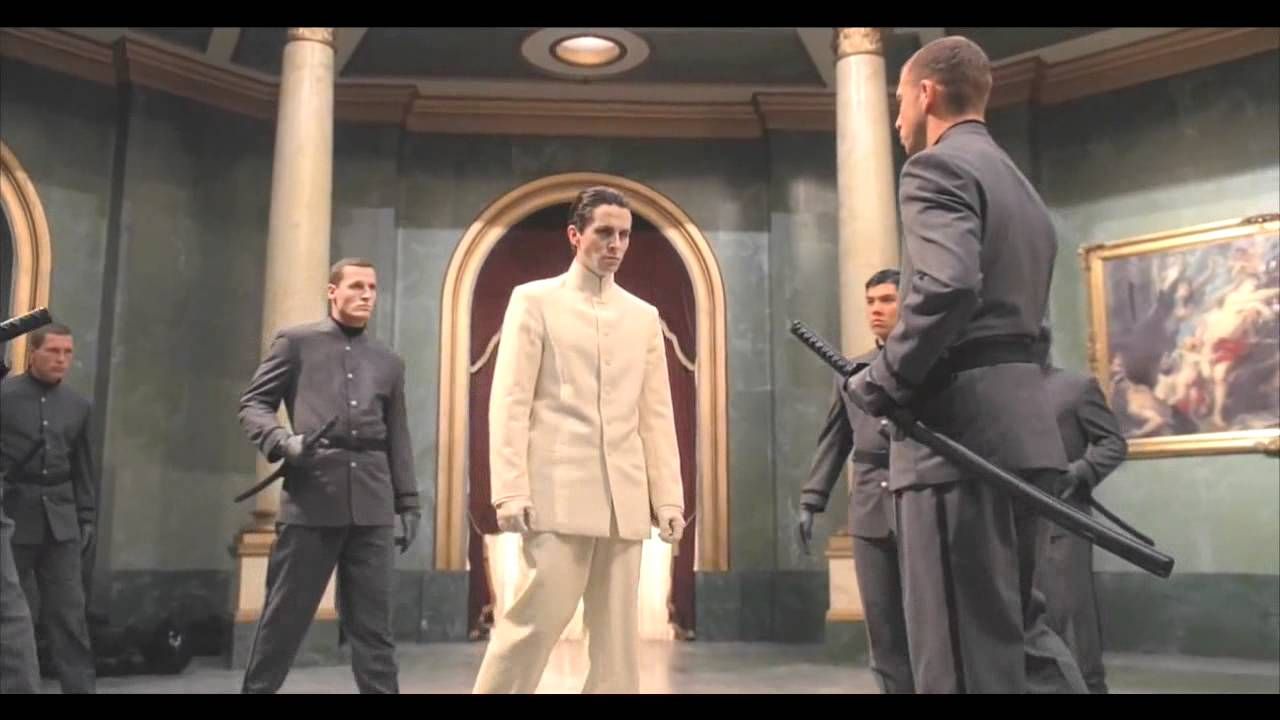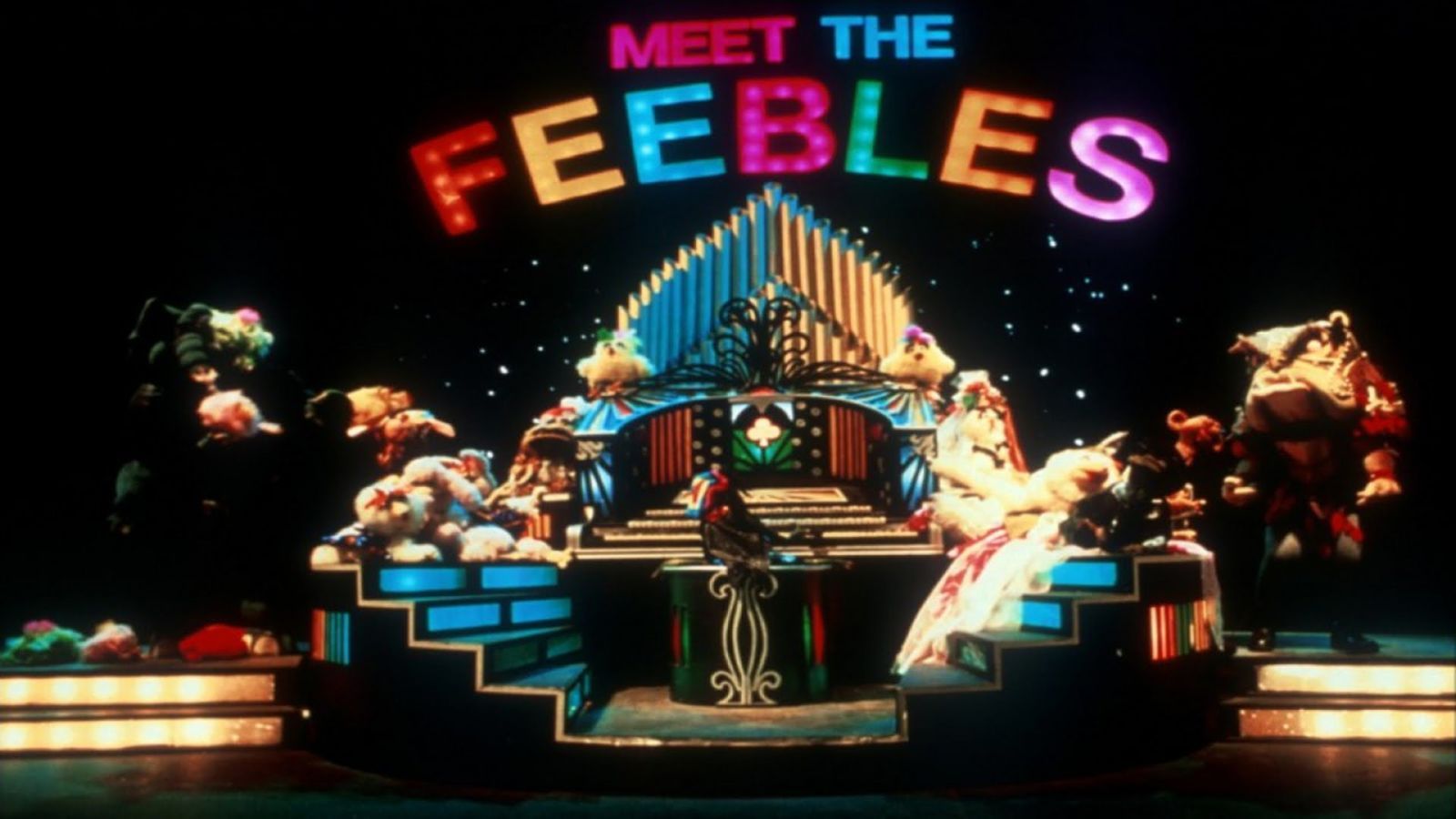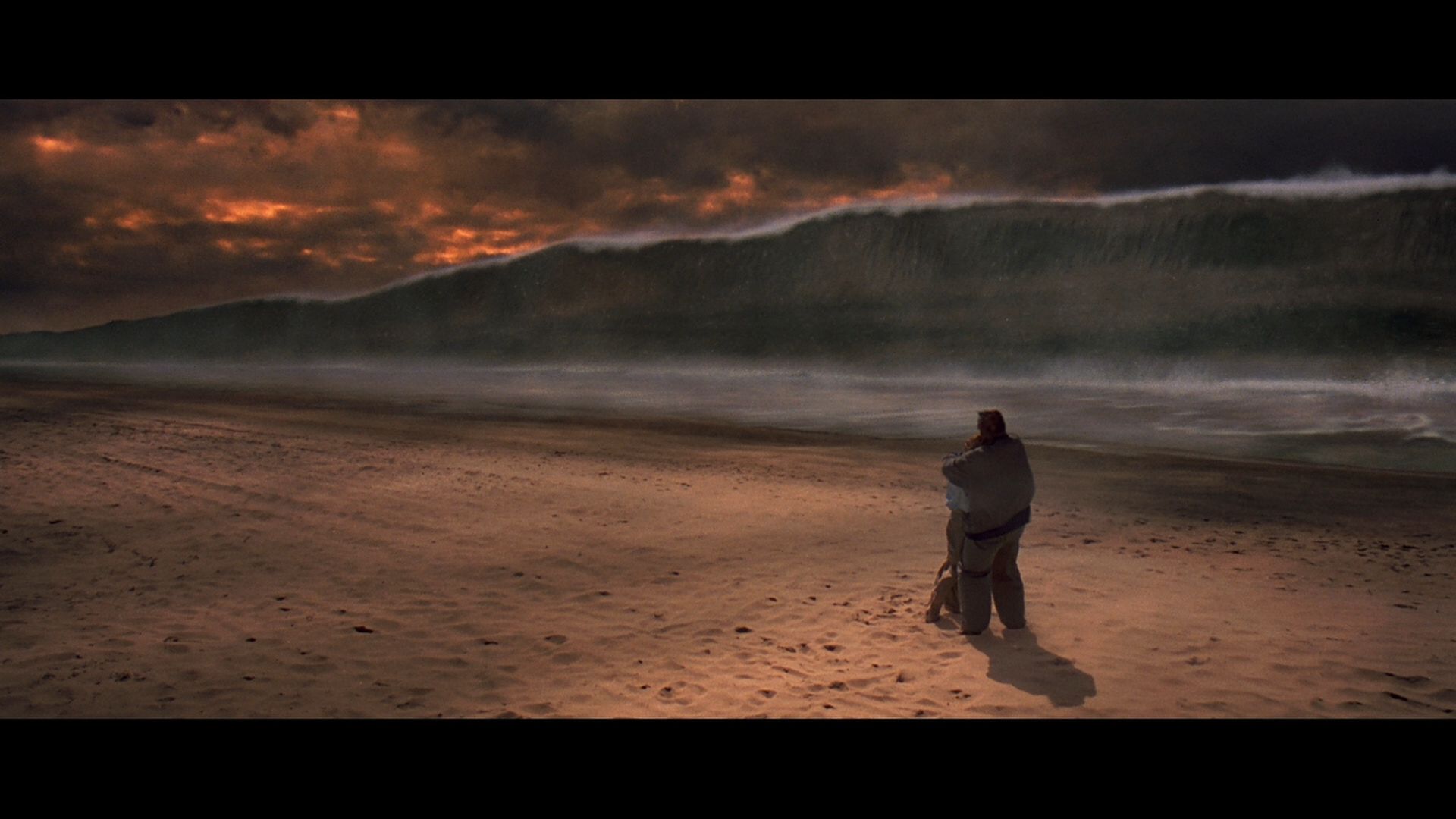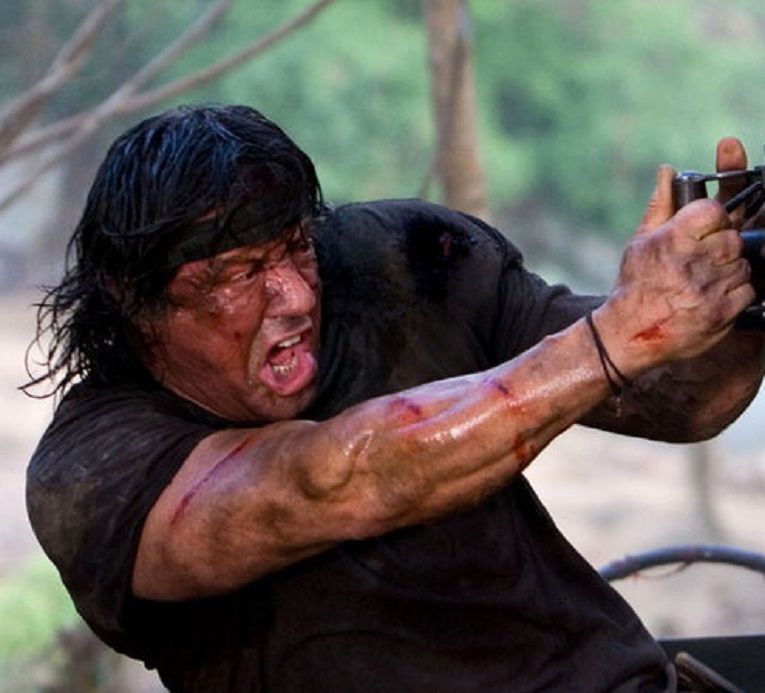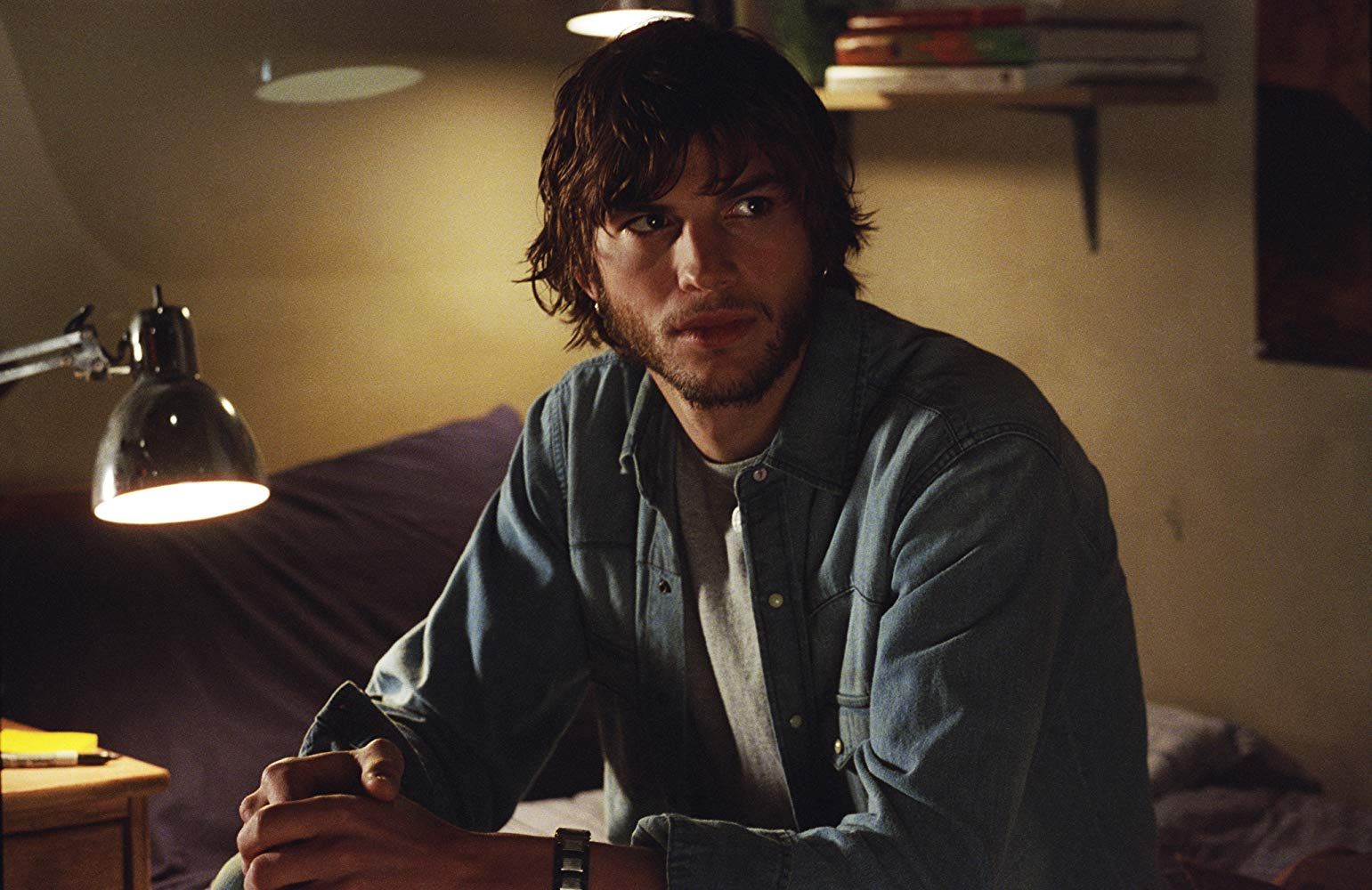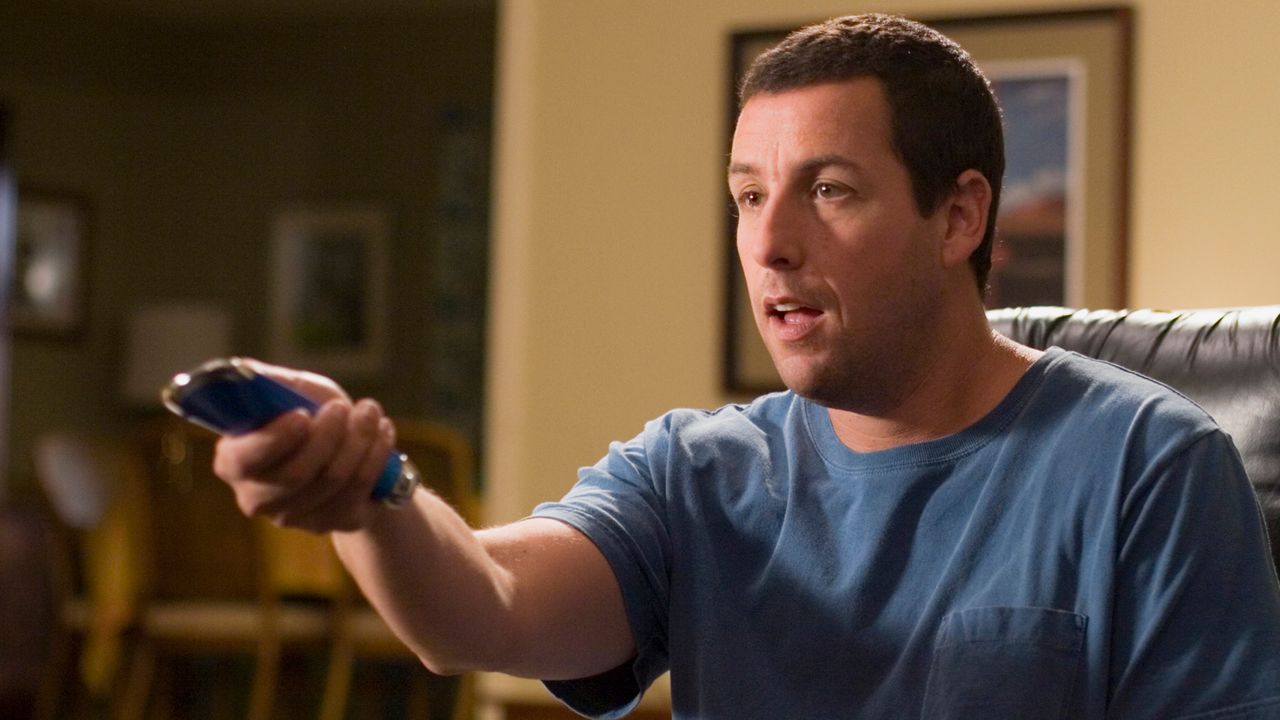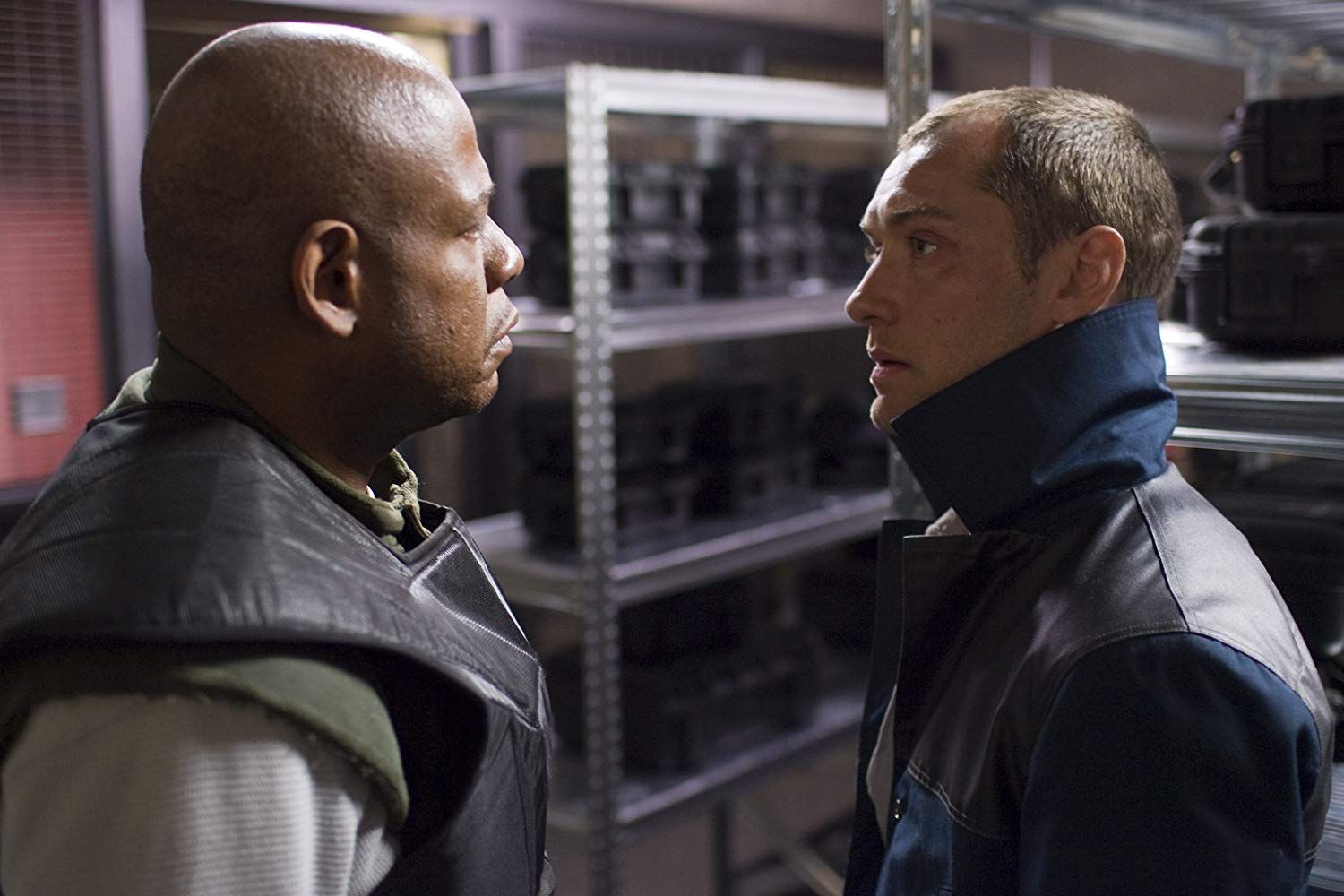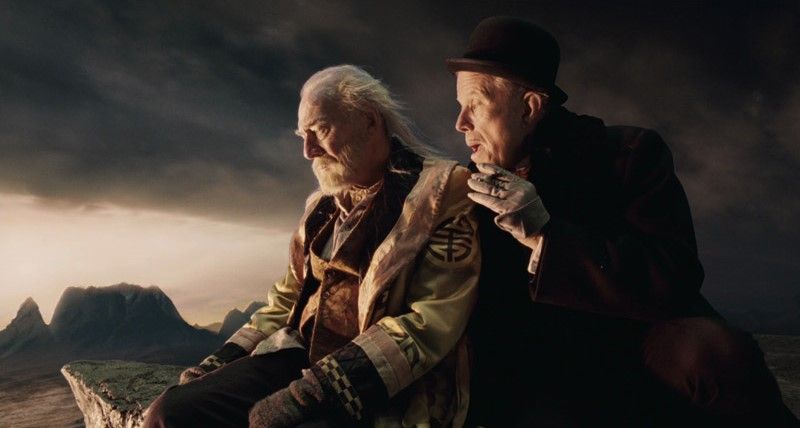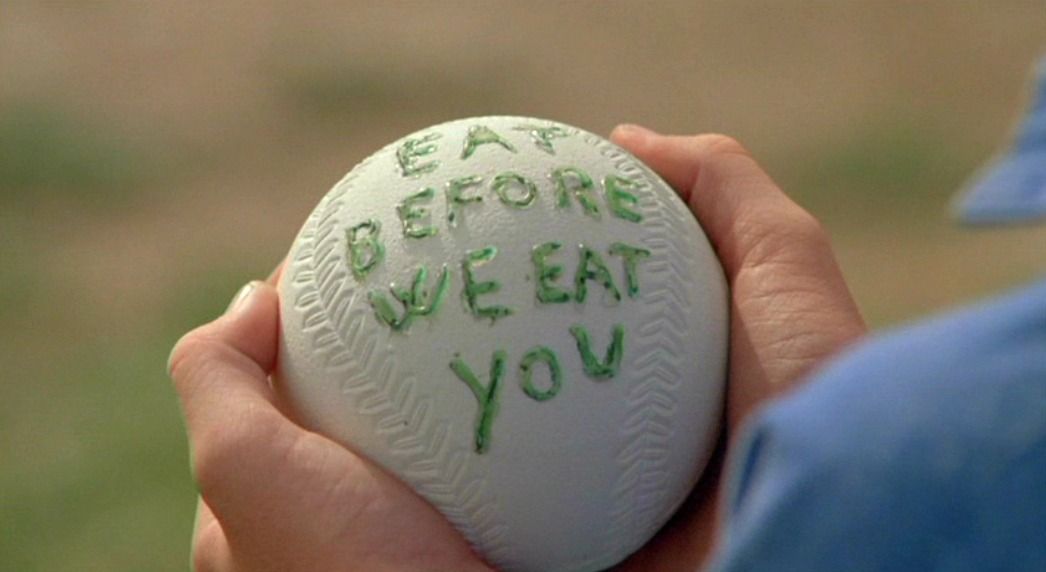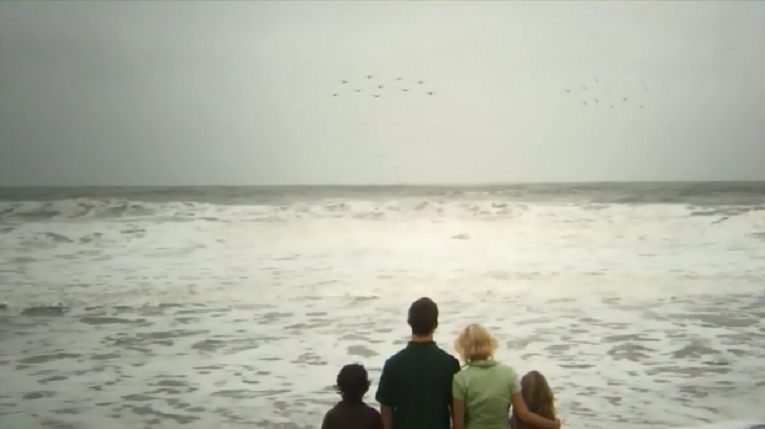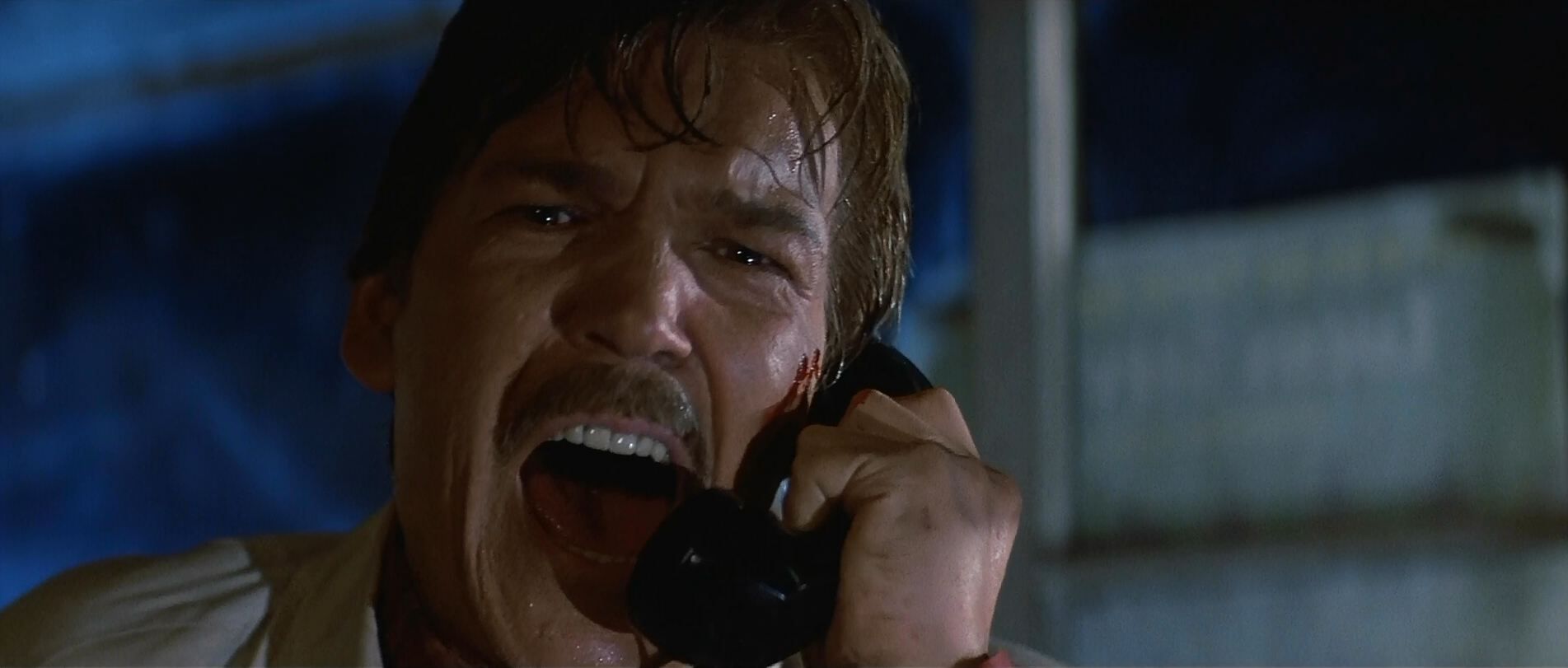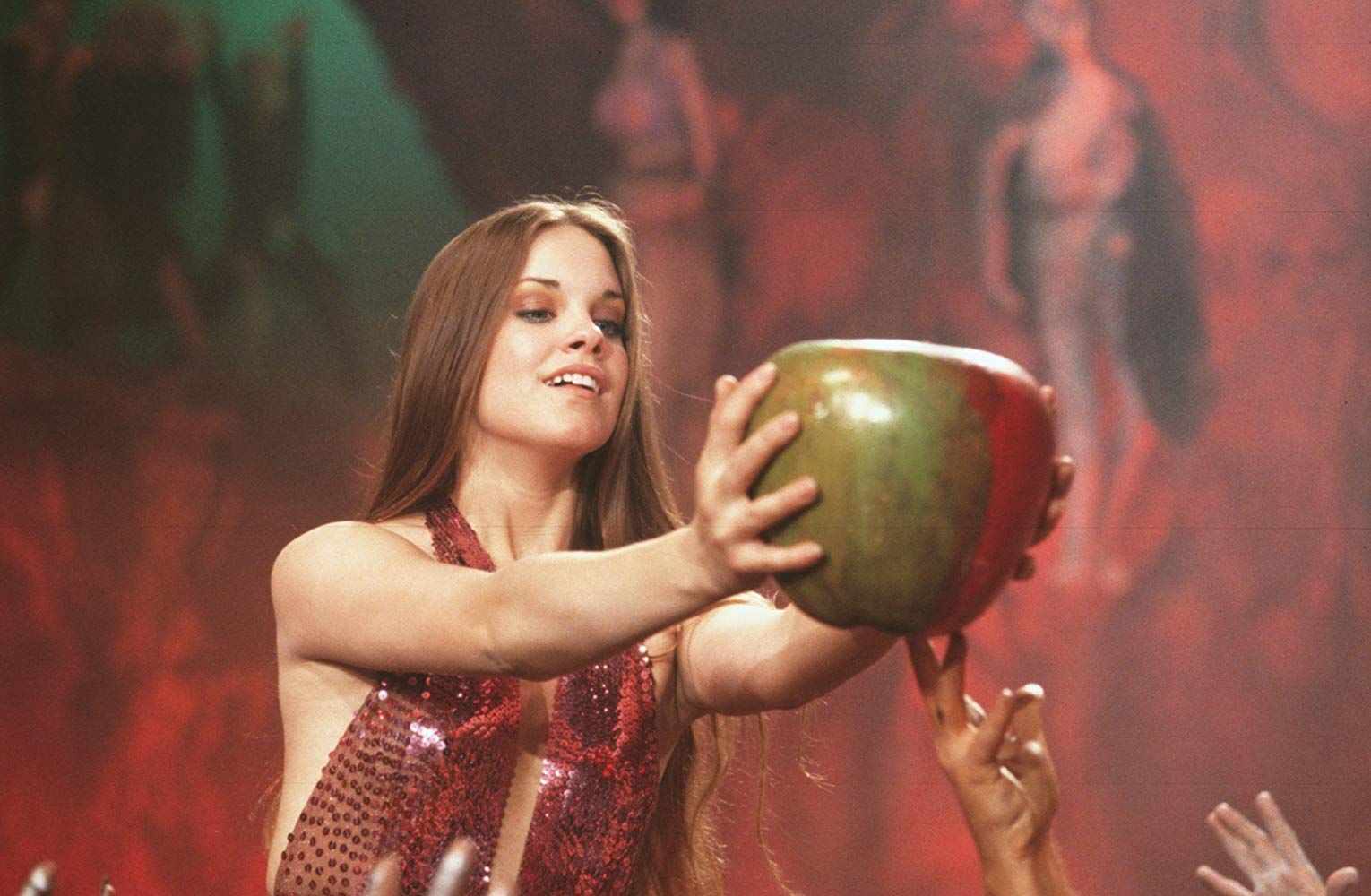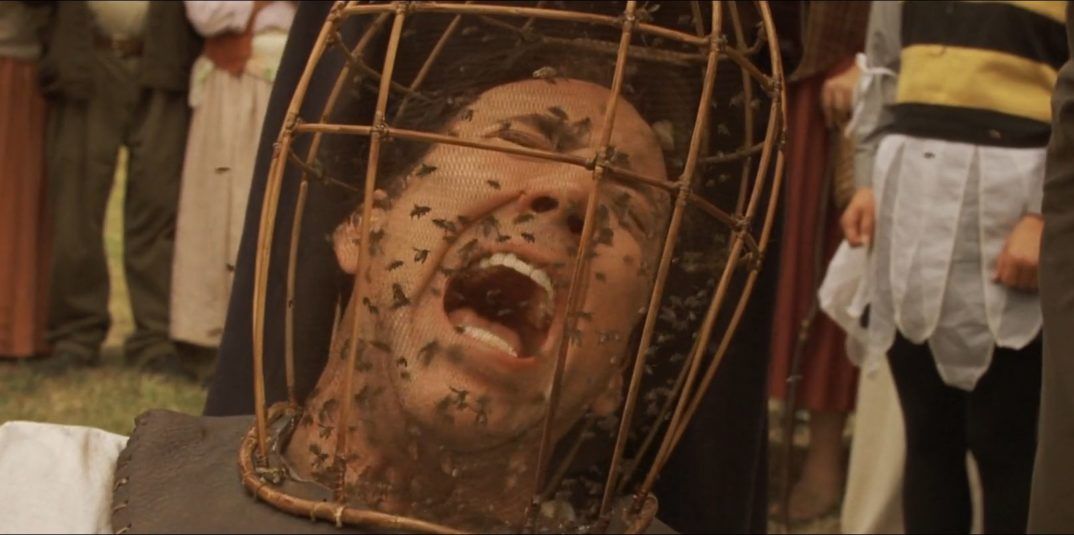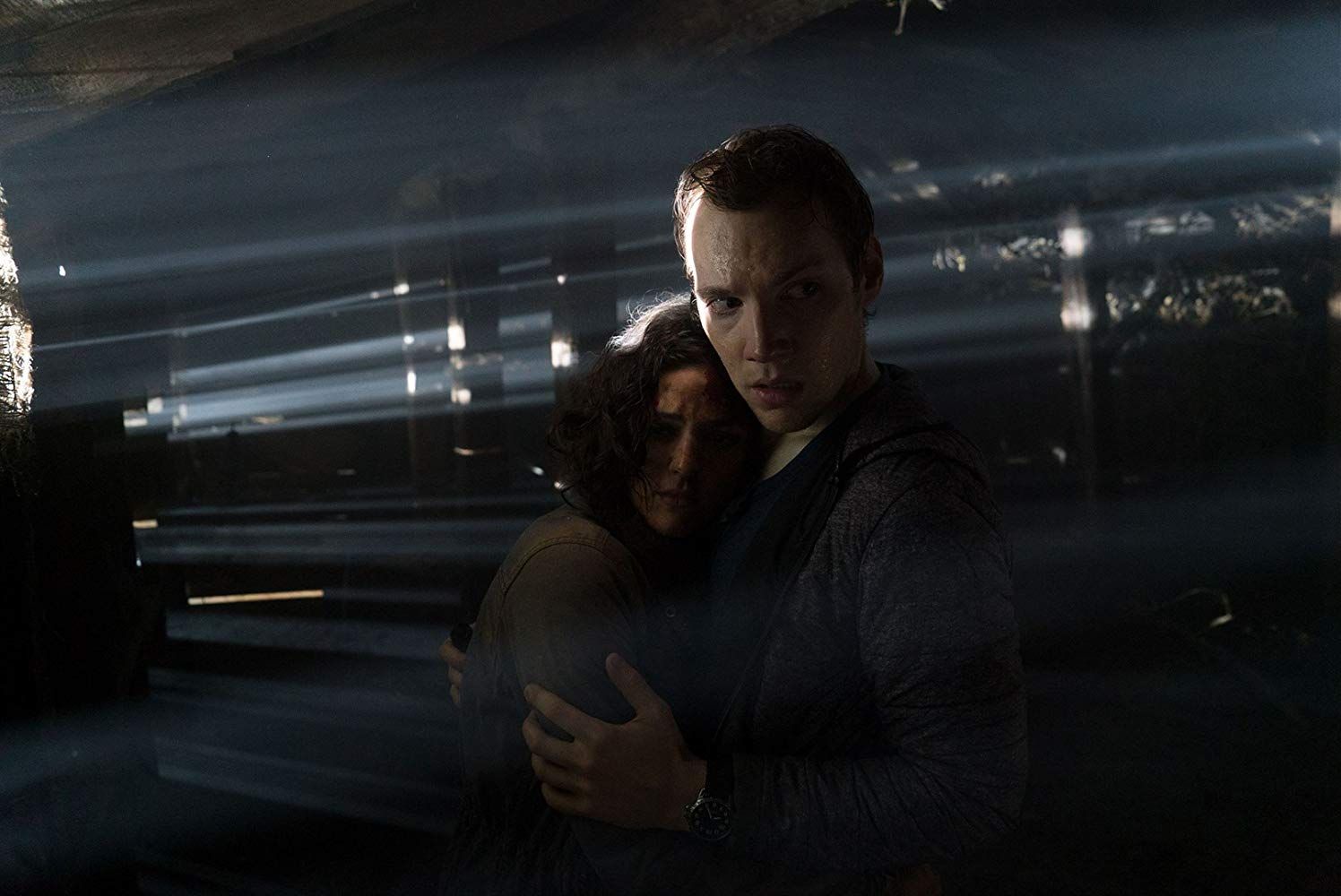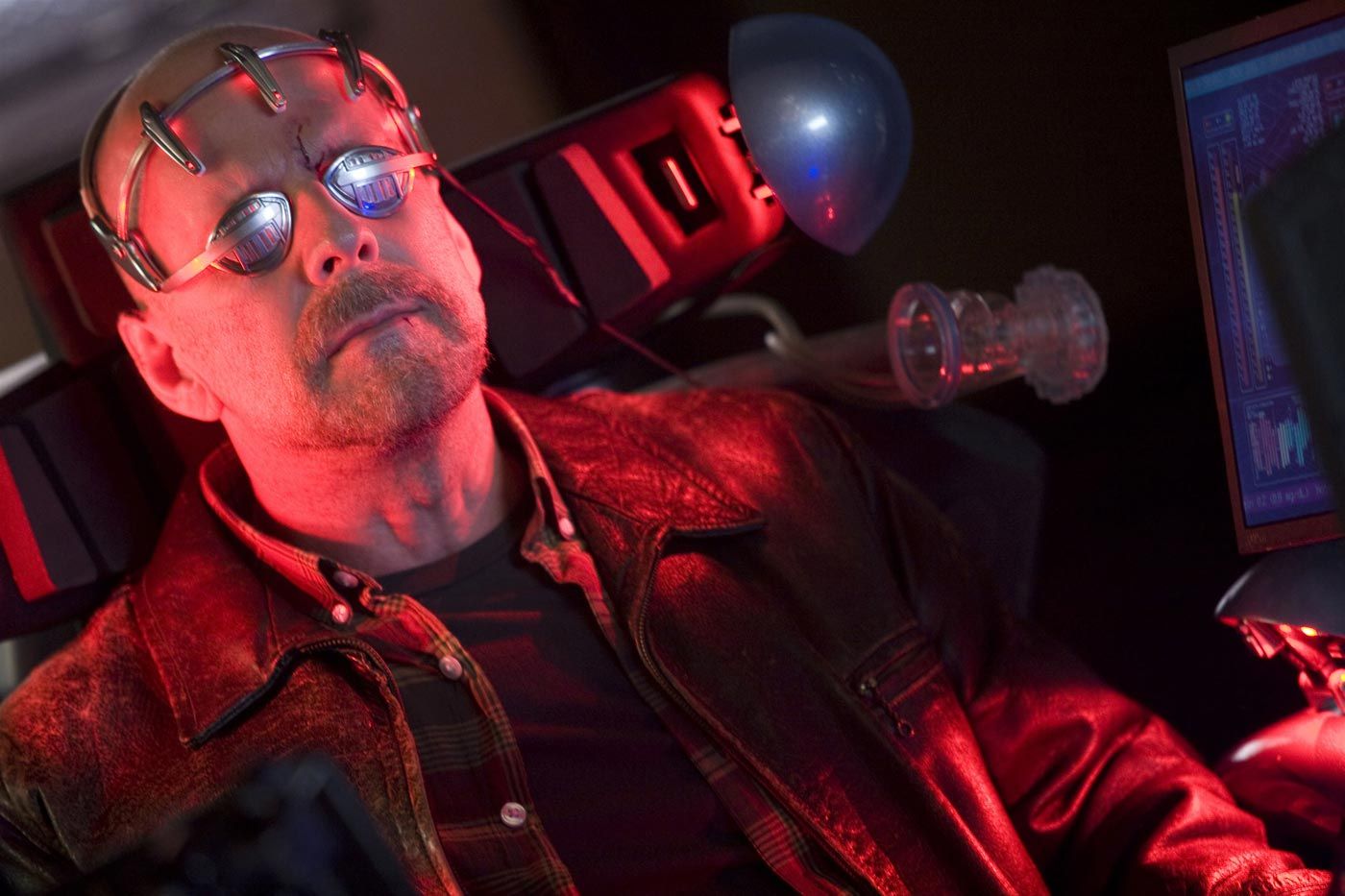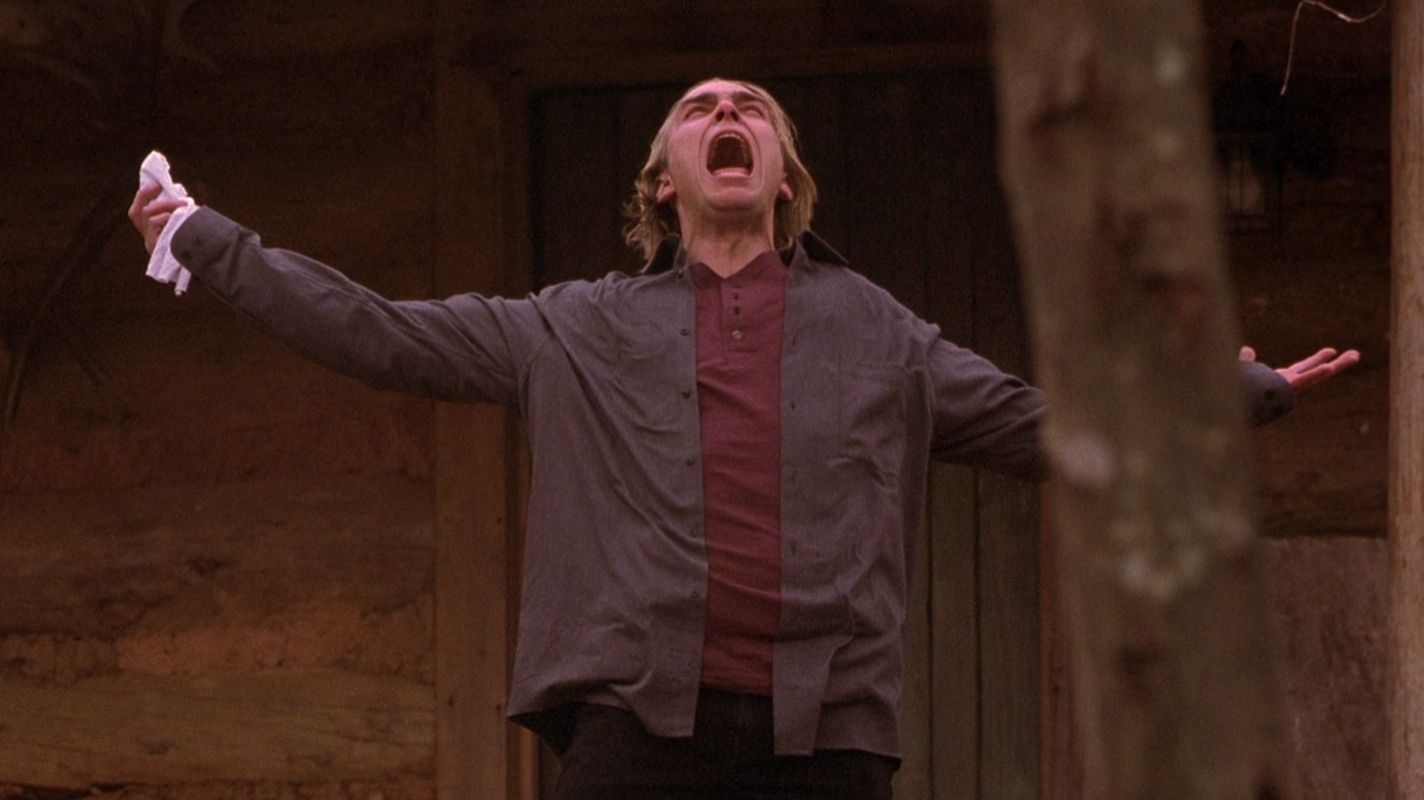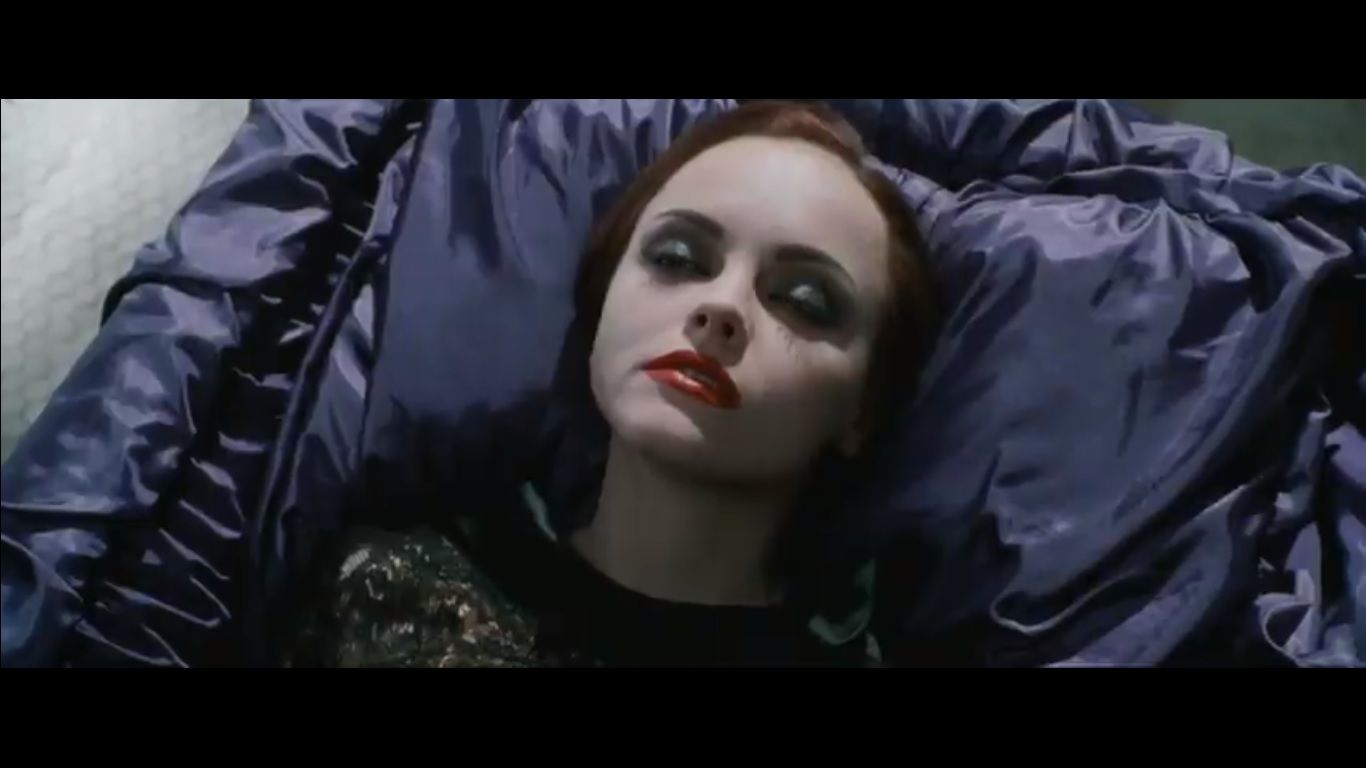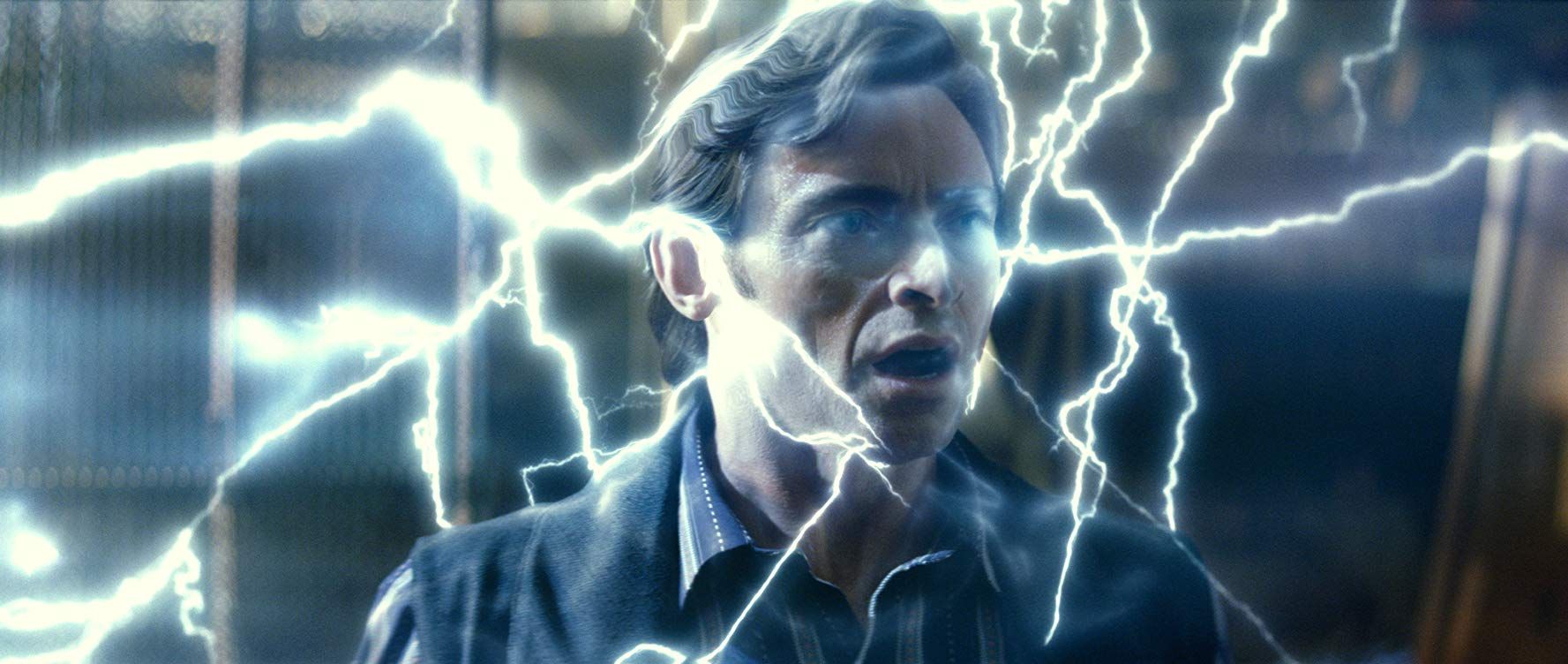Whether it be an unexpected twist, an incredible action sequence, or a trip into a surreal mindscape, these bad movies were all rescued at the last minute by truly memorable and unexpected climaxes.
The Hobbit: The Desolation of Smaug
The Hobbit trilogy was, in a word, unfortunate. Suffering from bloated plot additions, inexplicable new antagonists, a completely non-canonical love story between an elf and a dwarf, who make smoldering bedroom eyes in an elvish prison (one of the worst Tolkein romance scenes since Aragorn made out with his horse). It tried to capture the epic, critical and artistic success of The Lord of the Rings, but crashed and burned as badly as Laketown (boom, roasted). The only saving grace of the prequel trilogy is the ending of The Hobbit: The Desolation of Smaug.
Most of the movie is a salad of bad filmmaking decisions: creating a superfluous villain, trying to merge the plot with that of The Lord of the Rings, and other pointless window dressing. However, near the ending, the scene between Smaug and Bilbo (portrayed by Benedict Cumberbatch and Martin Freeman, respectively) was the only redeeming feature of the film. It felt more in the spirit of the book: a fairytale that follows the classic David & Goliath structure found in many folk stories. The repartée between Smaug and Bilbo is enjoyable, and the dragon feels like an actual, sinister villain, rather than the one-dimensional orc antagonists.
Constantine
Constantine, starring Keanu Reeves as the titular character, is a bit of a missed mark (although according to Rotten Tomatoes, audiences seemed to enjoy it far more than the critics). Though the general concept is intriguing (that of angels and demons battling it out on earth), the narrative is convoluted and stilted.
Though this could be a forgettable, entertaining but fumbling movie, it’s rescued by the stellar performance of Tilda Swinton as Gabriel, a mysterious, androgynous angel with complex, inscrutable intentions.
Swinton’s performance as an otherworldly being is captivating and oddly convincing. Even after having her ass handed to her, she has a strange twinkle in her eye, as if she truly is detached emotionally from the universe.
Brother Bear
One of Disney’s red-headed stepchildren, Brother Bear was a critical swing-and-a-miss. The plot, about a hunter who is transformed into a bear to learn the importance of all animal life, could have been solid groundwork for a children’s fairy tale. However, it’s a mostly hollow film, with forgettable dialogue (even for a children’s movie), only somewhat sympathetic main characters, and a generally uninspired narrative. The glib, lackluster tale culminates into a surprisingly touching scene, during which the titular character must directly confront his wrongdoings.
It’s an unusually bold move of Disney to feature a main character who is, himself, the antagonist who must redeem himself, and if the rest of the film had displayed the same amount of heartfelt emotion as the last few scenes, it may have managed to escape the Dollar General VHS bargain-bin.
Event Horizon
Event Horizon was panned by critics, although it has since developed a cult following. The confused, erratic plot, potpourri of mishmashed genres, and heavy-handed gore earned it scorn from critics. Though the film is deeply flawed, it does have one saving grace: Dr. Weir’s (portrayed by Sam Neill) descent into madness. The ending of the film, which shows everything going to literal hell, is corny and mostly silly, but there is a vein of true horror in the story of the insane Dr. Weir, slowly driven to blood-soaked lunacy.
The cherry on the offal-filled pie is the scene in which Weir has gouged out his own eyes, with an understated performance by Neill that, coupled with the campy dialogue, is creepy and fun only in the way that 90’s horror movies could be. “Where we're going you don't need eyes to see,” is one of the best, most nonsensical lines ever produced by a sci-fi horror ghost story.
Monkeybone
Brendan Frasier is the great-haired prince of bad 1990’s-2000’s movies. Monkeybone, a dark comedy live action/animated Ambien-dream of a film, was mostly a mangled wreck. The plot felt like a series of frenetic “and then’s.” The basic plot is that Stu (Frasier) creates a cartoon monkey named Monkeybone who possesses Stu (hoisted by his own monkey-petard), and turns into a huge jerk, with a soul patch to prove it. Stu must journey from limbo to retrieve his body and stop Monkeybone. As you might surmise, it’s not an Oscar-contender.
The ending, however, features a showdown between the Monkeybone-possessed-Stu and Stu’s-mind-inside-of-a-dead-athlete-organ-donor (portrayed by Chris Kattan).
It sounds confusing and overly complicated, and it is, but at least we get to see Chris Kattan acting like a duct-taped-together reanimated organ donor, running away from doctors who still want to harvest his organs (he throws a kidney or two at them), culminating in a fight that ends with death (Whoopi Goldberg) showing up in a giant robot. Also, immediately after Stu regains his body, he shaves his soul-patch off, one of the most satisfying good endings to a (terrible) film.
The Medallion
The Medallion is a forgettable Jackie Chan action vehicle. The plot (which seems to exist solely to show off Chan’s stunt abilities) features a magical medallion that can bring people back to life, and give them super powers. Of course, it gets into the hands of an evil villain, yadda yadda yadda, Chan punches a bunch of stuff and does cool parkour.
There’s a final showdown with the bad guy, Chan’s love-interest (Claire Forlani) gets killed (oh no) and then brought back to life (yay), but it ends with one of the most inexplicable, supidest, yet perhaps best rides-into-the-sunset tropes ever: Chan and Forlani, both resurrected by the medallion, now with limitless superpower, decide to go for a really, really fast run.
Sausage Party
Sausage Party is a contentious film. Some see it as a crude new artform that transcends film by being as ridiculously juvenile as possible, others see it as lazy, oft-times racist shock-humor, and little else. Regardless of which side of the fence you land on, Sausage Party does get one key thing right: it fully commits.
If you’re going to do blithe jokes about racial stereotypes, sex, and food torture porn (?), the least you can do is end your film on the note of a food orgy, which Sausage Party eagerly delivers. Is it a good film? Probably not. Does a food orgy at least demonstrate a fierce loyalty to the film’s nasty, naughty core? It does.
Beowulf
Beowulf, a boring, dead-eyed mo-cap CGI film, with the cool bonus of being one of the first 3D films to make us puke our guts out (not just at how terrible it was, but from literal motion sickness) is bad. It’s inescapably bad. It’s “Nude, golden CGI Angelina Jolie with hollow eyes” bad. But at least we get a final scene in which the titular Beowulf (Ray Winstone) Spider-Man-swings around and attacks a dragon (the dragon is also his son, because this movie and the source material are complicated).
Eventually, to the gratitude of the audience, he rips out his own heart in order to kill the dragon (they’re linked somehow, again, complicated). Not only is this a blessed relief from the churning, plodding, vomit-inducing cinematic experience that was Beowulf, it truly was, in a word, a radically metal action sequence that was (at least without 3D glasses) visually impressive.
Phase IV
Phase IV is your standard B-movie creature feature… up to a point. It’s about ants who, after a cosmic event, become ultra-evolved, with a superintelligent hive mind that is capable of constructing perfect geometric structures. Citizens flee the ants, while human scientists and the ants clash, but the ants always have the upper hand. In the original ending, the movie simply ends with a voiceover explaining the ants were actually planning to peacefully incorporate humans into their new world. But the lost, original ending is what truly salvages this film from schlock to surrealist art.
The recently unearthed lost ending features a montage of Dali-esque imagery: ants emerging from peoples heads, a couple running across strange geometric structures, a fish that is half woman (but reverse mermaid style - human legs, fish head). A human swimming with frogs, a man flying with eagles, a kaleidoscope of nude women: it feels like the ending scene of Stanley Kubrick’s 2001 on LSD. There’s never any explanation of the visuals, which makes it all the more entrancing.
Open Water
A “found footage”-style horror movie, Open Water never quite reached the level of being a good film. The premise itself wasn’t bad: two scuba divers (Daniel and Susan, a married couple going through relationship issues) are accidentally abandoned by their boat, and left to die a slow death in shark-infested waters, but the film never manages to be interesting. However, the final scene manages to somewhat redeem the whole thing.
After Daniel (Daniel Travis) dies, Susan (Blanchard Ryan) is left alone, surrounded by sharks. Rather than wait for death, she sheds her scuba equipment, and allows herself to sink into the water. The way this scene is shot, as her expression changes from horror to resignation, is actually quite poignant, and makes us empathize in a way that was missing for the rest of the film.
Anchorman 2: The Legend Continues
Anchorman 2, especially when compared to its predecessor, Anchorman, was a sub-par comedy. However, it redeemed itself with an epic, nonsensical fight scene near the end of the film, lampooning itself by overzealously topping the fight scene in the original film.
Ron Burgundy’s (Will Ferrell) news team faces down with a rival news crew, the BBC (with Sasha Baron Cohen), MTV (Kanye West), Entertainment News (featuring Amy Poehler and Tina Fey), the Canadian News Team (Jim Carrey), ESPN (Will Smith), the History Network (Liam Neeson accompanied by a minotaur and the ghost of Stonewall Jackson), an old, Tom Brokaw-like news veteran/ were-hyena (Harrison Ford.) It’s something to behold, and was worth slogging through the rest of the movie.
Man on Fire
Starring Denzel Washington, Man on Fire is a galvanizing film. Most critics hated it, while audiences loved it, because audiences love watching Denzel righteously pummel his way through underworld thugs on a mission to rescue an adorable kidnapped child (Dakota Fanning). It's a standard action movie slog with an unexpectedly poignant ending.
Denzel's John Creasy finally blasts his way to the kidnappers and agrees to trade himself for Pita (Fanning), showing how far Washington’s character will really go in order to stay true to his word and save the girl he’s been charged to protect.
Equilibrium
Despite featuring the talents of Sean Bean (whose character dies, as per usual) and Christian Bale, this sci-fi movie about a future in which emotions and art are suppressed, mostly feels stale. While the concept isn’t bad (though it verges on ripping off Ray Bradbury’s Fahrenheit 451) most of the film is lackluster.
However, the epic ending battle is extremely satisfying, featuring an extended sequence of handgun kung-fu and one of the antagonists getting his face sliced in half with a katana, courtesy of Bale’s character.
Meet the Feebles
Before Peter Jackson took on the mantle of Lord of the Rings director, he had some interesting early projects. Chief among them in terms of weirdness was Meet the Feebles, a film featuring a cast of Muppet-like-puppets, all of whom engage in a variety of extremely R-rated vices. It’s highly, highly uncomfortable, and it would have been locked away in our repressed-memory-vault, if not for the over-the-top violent ending.
One of the main puppet protagonists, a hippo named Heidi, goes postal: after the puppet boss verbally abuses her and tells her she won’t get the leading role in a production, she takes a machine gun and goes on a blood-soaked (cotton-stuffing-soaked?) rampage. In an epilogue, it’s shown she’s been in prison for 10 years, and has be rehabilitated to work as a grocery store cashier.
Deep Impact
Deep Impact is a world-ending-disaster film, in which a life-ending comet is careening towards the earth. Most of the film is rather forgettable and uninspiring, despite the high stakes. However, the ending actually manages to be heart-wrenching and poignant. The comet has been nuked, but that only manages to split it up into two still-pretty-hefty rocks.
Seeing some of the protagonists resign themselves to their fate, standing on the beach in the face of a huge tsunami, while others choose to sacrifice themselves while getting their children to safety amidst the panicked traffic jams of people fleeing, was an emotionally salient final scene. It’s too bad the rest of the movie didn’t have this kind of impassioned feeling.
Rambo (2008)
Nobody asked for four Rambo movies. There were no petitions demanding them, no film critics opining that they wished for at least one more Rambo movie. And yet, inexplicably, it exists. There’s not much positive to say for this movie - it's a vague, “scary foreign baddies are doing bad stuff and Rambo’s (Sylvester Stallone) gotta stop them” plot, which is simply there to justify us seeing Rambo go ham on some dudes.
And indeed, the ending delivers. If only the rest of the movie was honest enough to admit that it was just a vehicle for us to see Rambo goin’ on a good old-fashioned blood-splosion action sequence.
The Butterfly Effect
There’s a strange stubbornness amongst directors who seem hellbent on miscasting Ashton Kutcher. Such is the case in The Butterfly Effect, a time-traveling sci-fi movie based on a fantastic premise, which it fumbles so completely, it almost merits admiration. There’s a series of corny, ridiculous outcomes of the multiple altered timelines that Kutcher’s character experiences (whoops he bungled the past and he ended up a double-amputee! Ack!) that makes it hard to take the movie seriously.
The theatrical ending tries to go for a more serious tone, but that’s not what we want to highlight. Instead, the director’s cut ending fully embraces the ridiculous, fantastical shlock that makes this movie unique, rather than yet another botched sci-fi. We’ll leave it at this: it involves Ashton Kutcher time-traveling back to when he was a fetus and strangling himself with his own umbilical cord.
Click
Adam Sandler, whose films range from great to “why, God,” stars in Click, a movie that lands squarely in the latter category. Michael Newman (Sandler) gets a magical remote that allows him to fast-forward through boring moments in his life. The film’s humor is lazy and doesn’t land - for example, he gets to see women jog in slow motion, how ribald! But surprisingly, the last part of the movie actually manages to tug the audience’s heartstrings.
As Michael fast-forwards through all the boring or unpleasant moments, he misses out on key milestones in his family’s life. Time slips through his fingers, and he only learns (seemingly) too late how precious time is with his family. Sandler actually manages to pull off this performance. It’s a weirdly touching portion of an otherwise stinker-filled turdfest of a movie.
Repo Men (2010)
The tragedy of Repo Men (starring Jude Law and Forest Whitaker) is that it could have been good. The premise is the same as Repo! The Genetic Opera: both are based on the book, The Repossession Mambo, in which “repo” men reclaim artificial organs from customers who are unable to pay back their loans (this kills the customers).It's an interesting concept, but the script and narrative falls disappointingly flat. But the twist ending is one of the few good uses of the “it was all a dream” tropes.
The ex-repo-man-turned-hero, Remy (Law) seems to triumph over the evil corporation, wiping out everyone’s organ debt, getting the girl, and winding up on a beach. But it turns out, it’s all a virtual reality dream: Remy’s in a coma, due to his former partner Jake (Whitaker) knocking him unconscious. Jake, filled with guilt, hooks Remy’s brain up to a neural network, which acts as a sort of heaven-matrix. Jake then goes back to work selling organs and repo-ing them.
The Imaginarium of Doctor Parnassus
The Imaginarium of Doctor Parnassus was, in a word, overwhelming. With a stellar acting crew (including the late Heath Ledger) and an imaginative premise, this Terry Gillium film had the keys to success. But the first act of the film was laden with convoluted dream sequences, over-stimulating visuals, and seemed to lack a clear direction of plot. This changes towards the end, involving on of the main protagonists, Tony (Heath Ledger, who magically transforms into Johnny Depp, Jude Law, and Colin Farrell while in the “Imaginarium” dreamscape).
Tony turns out to be a horrible guy who steals children’s organs (we're not kidding), and Doctor Parnassus (Christopher Plummer) murders him by tricking him into hanging himself, and gives his soul to the devil Mr. Nick (Tom Waits). It’s a satisfying conclusion with a clear narrative, which helps comb the tangles from earlier in the film.
Troll 2
God bless Troll 2, one of the internet’s favorite bad movies. It’s about trolls who eat humans (played by some of the worst puppets ever to grace the silver screen).There’s the famous, highly-giffable scene in which one of the teenage characters looks on in horror as trolls turn a girl into a pile of green goop (their preferred method of execution) and woodenly states, “They’re eating her… and now they’re going to eat me. Oh my Gaaaaawd.” But our favorite scene is the ending.
The protagonist, a young boy named Joshua (Michael Stephenson) seems to defeat the trolls through some kind of anti-troll boulder (honestly who cares). Unfortunately, in a twist ending that puts The Sixth Sense to shame, the boy is walking through his house, when a baseball falls down the stairs. He picks it up, and in green goo is written, “Yummy! Mom is so good!” He runs to the kitchen, only to find the trolls eating his mom (who has been turned into green goo, of course). The boy explains, helpfully, “They’re… eating my mom!”
Cut to a bunch of trolls scooping up handfuls of green slop, and then the best line in cinematic history, courtesy of one of the trolls: “Want some?” The boy screams. David Lynch, eat your heart out.
Birdemic
Birdemic is an infamously bad movie (with CGI that looks like it was ripped directly from the graphics in a 1980’s Geocities website) with a surreal ending that almost elevates the film to being merely terrible. The movie is about bloodthirsty birds that attack people (Hitchcock was cremated and scattered over the ocean, but each one of his ashes is rolling in their respective watery graves). The acting is bad in a way that’s almost hard to achieve, the CGI birds and repeating loop of low-fi bird sound effects feel like a Tim & Eric skit, but it’s the ending that truly makes this film a masterpiece.
A family is trying to escape the birds, hiding out in their SUV. The father shoots at them with a gun (spectacular), while one of the birds flies right into their windshield and dies (a tour de force). Then, inexplicably, a flock of doves comes and drives out the evil birds. The family comments on their newly improved situation: “Look, they’re leaving!” Then the family spends a solid 5 minutes of screentime standing on the beach, holding hands, watching the birds retreat (or at least hover in the sky, wings flapping sporadically in a poorly animated fashion). It’s a surreal scene that leaves us with a single question: is this art? Answer: absolutely.
Halloween III: Season of the Witch
There’s not much going for Halloween III: Season of the Witch. The acting, the writing, the bizarre departure from the Michael Meyers, the absolutely inscrutable plot: it feels almost intentionally, painstakingly unwatchable. In synopsis, an evil CEO creates Halloween masks for children with an electric chip in them, and also fragments of Stonehenge.
The protagonist (Tom Atkins) finds out about the CEO’s evil plan, and runs out-of-breath to a gas-station, demanding to use the confused gas attendant’s phone. He calls the TV stations (we’re not sure how you call TV) and gets channels one and two to stop the commercial, but it’s still playing… on channel three! The true horror is that this town only has three channels. Well, the protagonist becomes frantic as the commercial continues to play, and screams into the phone over and over, “Stop it, stop it, stop it, stop it!” Tom Atkins truly brings his all to a, frankly, limited script, and it’s very honestly impressive.
The Apple
Do you remember the 1980’s film, The Apple? If you don’t, who could blame you, and if you do: we’re very sorry. The movie is about rock stars trying to make it in the world, but it’s also a biblical allegory of some sort (the apple, get it? Eh? Get it?). Basically, Mr. Boogalow (Vladek Sheybal), the head of a record label company called BIM, is a literal stand-in for Satan. The God-like Mr. Topps (Joss Ackland) carves Alphie, (George Gilmour), the first human, out of rock, ergo Alphie is very good at rock-and-roll. Musical hijinks ensue, BIM takes over the world, and God raptures all the good hippies, and leaves everyone else to suffer under Mr. Boogalow. In effect, God allows Satan to win before driving off in a flying Rolls Royce.
This unintentionally dark, nihilistic ending is actually an extremely poignant satire of religion, as well as the deification of the rich and the cruel neglect of the poor (again by accident, the film intended for this to be a happy ending). It’s an ending in which God himself flies away in a magical Rolls Royce, and metaphorically gives humanity the middle finger: it’s true art.
The Wicker Man (2006)
The original 1973 The Wicker Man was a legitimately good movie, exploring the horrors of a small town’s cult mentality and mob-think. Nicolas Cage’s The Wicker Man reboot is a puzzling, psychotic meltdown of a film. It at least earns some points for Nicholas Cage’s blisteringly intense acting, but it’s the ending that elevates this from a B-movie to something that is pure, two-hundred-percent weapons-grade Nicolas Cage, whom we contend is the real “National Treasure.”
Good ol’ Nic Cage (his character, we suppose, but don’t think for a minute that this isn’t Cage’s very soul touching us from behind the screen) is captured by an entire town of weirdo cultists, who think killing him will make the honey harvest better, or some reasoning along those lines. He yells, red-faced with veins popping out of his neck like earthworms after a rain, “I don’t believe in your god!”
And of course, as he’s tortured with bees, he cries out the immortal, famous line: “Oh no, not the bees! Not the bees! Aaaah! Oh they’re in my eyes! My eyes!” But the bees don’t kill him. He dies after being burned inside a giant wicker man (thus the title, you see).
Blair Witch (2016)
Blair Witch is not a film that should have been made. The original The Blair Witch Project perfectly executed the premise, with a satisfyingly chilling ending that may be one of the most creative ways to conclude a horror movie. Blair Witch did not need to be made, nor was it made well, nor did it do anything to justify its existence, except for the final twenty minutes or so.
In the ending, the protagonists discover that you can’t look at the witch (which would have been a much better horror device if they hadn’t shown us the sort-of-scary generic horror witch lady). Then they figure out the best way to accomplish this: to stand with their backs to her while filming her with their cameras.
Surrogates
The science-fiction genre seems to be a minefield that catches overly confident directors off-guard, as is evinced by the movie Surrogates. It’s about a technologically-advanced society where people can transmit their minds to robotic puppets, so they can live in whatever body they want and not experience pain. Unfortunately, it's all so dull that there’s little to like about this film other than its incredible ending.
Though Bruce Willis’s character stops the virus from killing the human operators, he lets it disable the surrogates (because technology bad, human flesh good). The ending scene shows all the surrogates (i.e., everyone out-and-about in the city) suddenly collapse, a classic descent-into-chaos scene replete with car crashes and the fleshy sound of mass, simultaneous KO’s. It’s pretty striking (and awesome).
Cabin Fever (2002)
The first in Eli Roth’s series of torture-porn horror movies, Cabin Fever doesn’t rise too far above being a masochistic gorefest. The plot concerns a flesh-eating virus spreading through a backwoods town, karmic retribution, and a dog chowing down on a misfortunate teenager.
The best (and truly enjoyable) moment in the movie comes when the biggest jerk of all the teenage protagonists (Joey Kern) somehow survives all the deadly shenanigans by simply hiding out with gallons of beer, and celebrates his unexpected good fortune. Mid cheer, he’s turned into a wiffle-ball by gunfire, as the police mistake him for one of the infected.
After.Life
Though Liam Neeson’s sheer Irish power is often enough to salvage a terrible movie, After.Life still manages to be a stinker. A mortician (Neeson) who claims to be able to speak to the dead tries to convince a recently deceased woman (Christina Ricci) to move on. The movie is boring and hollow, but after the twist ending it is, in retrospect, a better film.
It turns out the mortician is lying: the “deceased” woman is alive; he considers people who take life for granted to be “walking corpses,” and wants to teach them about the sanctity of being alive. Unfortunately, Ricci’s character fails the test (she’s too afraid to wander outside of the mortuary and face life), so the mortician buries her alive. While the twist does not mend the numerous plot-holes and improbabilities, it lends a new dimension to Neeson’s performance and motivations.
The Prestige
Despite being overly convoluted, The Prestige is considered to be a decent movie by critics and audiences alike thanks to its bold, unexpected ending. About two rival magicians (Christian Bale and Hugh Jackman) who both try to do successful “transporting man” illusions, the film is full of curve-balls, body doubles and Tesla-built magic machines.
Bale's character Borden had a twin brother, so the two were able to double for each other to accomplish the illusion. But Jackman's character Angier built a machine that is making endless copies of himself, and he murders his copies during every performance. It’s a movie that proves that if you’re clever enough in the execution, you can create more awe by coughing up those much-desired answers to all the questions you’ve built up over the course of the film.
Devil
When most people think of Devil, they probably think of a terrible M. Night Shyamalan film, but that's only like 1/3rd correct. First of all, Shyamalan didn't direct this film about a bunch of strangers trapped in an elevator with the devil (including Bokeem Woodbine and poor man's Tom Hardy, Logan Marshall-Green); only produced it. Secondly, though the movie is absolutely as stupid as that premise made it sound, the end twist is, shall we say...palatable?
In a twist that was refreshingly restrained for a production boasting Shyamalan's name, the reveal is that everyone in the elevator sinned in some intense way, and only Marshall-Green's character wised up in time to confess that he was involved in a hit and run...that happened to kill detective Chris Messina's wife and child. In the end, Messina absolves him, the old lady who died but also was Satan vanishes, and all is right with the world. Or is it ... ?

